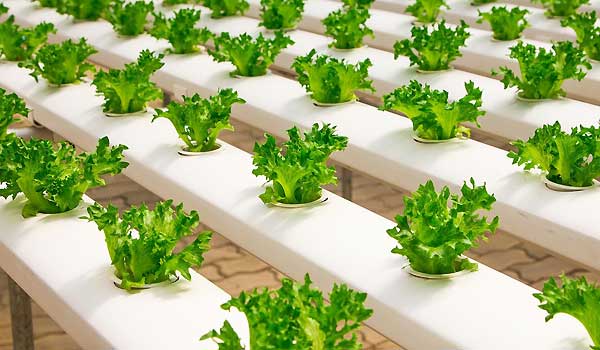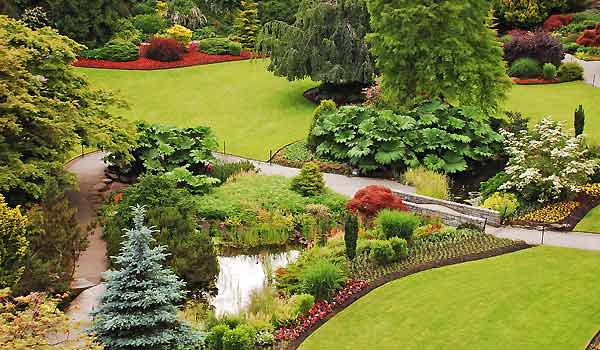Summer is nearly over and the garden outside is finished for the year. All the…
Gardening Basics For Beginners

Gardening Doesn’t Have To Be Hard!
It’s true that gardening does not have to be hard. After all, once you start gardening, Mother Nature will do most of the work for you.
Gardening can give you much more than beautiful flowers, trees and vegetables. When you garden you commune with nature. You spend time in the sun, listening to the birds, watching your seeds sprout and your plants bloom and put on fruit. You will watch your trees grow tall and strong and become homes for birds and squirrels. You will develop a relationship with your garden that is intimate and rewarding for years to come. And remember, to reap these rewards you only need one thing: the desire to garden.
The ‘Bones’ of Your Garden
The ‘bones’ of your garden are the permanent elements that provide its structure and define its character. These include walkways, walls, fences and trellises, boulders and rocks, statues, flower beds, trees, ponds and waterfalls that already exist or that you will add to define your garden. The large, existing structures in your yard will often determine where you place your garden. If you have a deck on the back of your house, you may want to plant a small flower bed that wraps around your deck. If you have large trees, they will determine whether you plant a shade garden near them or move your garden to a sunnier spot further away from the trees.
The shape of your garden is just as important as what you plant in it. The shape should be pleasing to the eye and tie in with the rest of your yard. For example, a round shape may not be the best choice for a garden spot that is in-between a square patio and a corner of the house.
To lay out the shape of your garden spot, first outline the shape with a garden hose. You can adjust the hose until you have the desired shape, then mark the outline with an orange spray paint so that your outline is preserved while removing grass and weeds and preparing the soil.
The borders you use to mark off your garden spots and flower beds are another part of the bone structure of your garden. One of the main issues when planting flower and vegetable gardens in a yard is being able to keep the grass form encroaching into your garden spots. By edging your garden spot with a plastic, brick or cement border, you create not only a beautiful setting for your garden but you also prevent the grass from creeping in among your flowers and vegetables.
Garden paths are beautiful additions to the bone structure of your garden. In a large yard, especially, having a pathway that leads from the house to the garden spot makes it easier to access it and to stroll around the yard.
Planting Zones
The United States Department of Agriculture Hardiness Zone Map is based on the average annual minimum winter temperature and divides North America into 11 separate planting zones with each zone being 10°F warmer (or colder) in an average winter than the adjacent one.
Planting zones are guidelines for planting by which gardeners and growers can tell which plants are most likely to thrive at a location using the average minimum winter temperatures in that area. By determining which planting zone you are living in, you can determine whether a certain plant will survive in your area. Virtually all plant nurseries in the United States rank their plants using the plant hardiness zones.
For example, a hydrangea is usually suitable for planting zones 6 through 9. Zones 6 through 9 range from St. Louis, Missouri to Houston, Texas. A hydrangea plant will be able to survive the winters in these areas without freezing and should also be able to survive the summer temperatures in these areas. A hydrangea that is planted further north, say in Michigan, will probably not survive the winter temperatures.
Mulch
Mulch is a layer of material that is spread over the top of the soil and around the plants in your garden. It helps preserve soil moisture, improves fertility of the soil and discourages weed growth. It can also add to the beauty of your garden, especially when your plants are young and small.
Mulch can be organic or inorganic in nature. Most mulch is made from finely chipped wood, like cedar mulch. Cedar mulch, in addition to holding in moisture and reducing weed growth, also discourages pests in your garden. Often straw is also used as mulch which is one of the best mulch materials you can use around your plants.
Organic mulch will decompose back into the soil, adding new organic matter into it and will need to be replaced every two to three years. Inorganic mulch can also be made from recycled rubber. Mulch from recycled rubber does not break down and therefore will never need to be replaced. It will hold moisture in and discourage weeds just as well as organic mulch.
When using mulch in your garden, apply a layer at least two inches thick. Keep the area around the base of plants free of mulch. Mulching too close to the base of a plant will hold too much moisture against the stem and may cause it to rot.
Watering Guidelines
Unless you are using an irrigation ditch, always use a shower attachment or sprinkler when watering your garden. Otherwise, the uninterrupted stream of water from a hose will disturb the soil around the roots of the plants. Watering with a shower attachment or sprinkler allows the water to be evenly and gently distributed over the soil.
As a general rule, plants need at least one inch of water a week to survive. In extremely hot weather most plants will need even more water. This is a measurement of how much water falls into a container before your turn the sprinkler off. To determine whether your plants need watering, poke a hole by sticking your finger into the soil near the base of your plants. If the soil at the bottom of the hole is dry, your plants need to be watered.
To measure the amount of water your watering system pours down, place a cake pan or a container of similar size and depth in the center of your garden spot and run your sprinkler for 15 minutes. After 15 minutes measure the depth of the water in the container. If necessary, adjust the watering time according to your measurement.
It is important to water your plants deeply. Watering deeply encourages your plants to develop deeper and stronger roots. Deeper and stronger root systems are able to gather more water and nutrients from the soil and give the plant greater support.
Overview of Fertilizers
When purchasing fertilizers, the formula of the fertilizer will be displayed as a series of three numbers on the packaging label which represent the percentages of the primary nutrients and are always listed in the same order. For example, 10-10-10 or 15-30-15.
- The first number represents the amount of nitrogen. Nitrogen promotes new foliage and overall growth.
- The second number represents the amount of phosphorus. Phosphorus promotes the development of the root system.
- The third number represents the amount of potassium. Potassium promotes the development of flower and fruit production and also augments disease resistance. For the majority of common garden plants, it is generally preferable to have a fertilizer with higher phosphorus content.
- Minor ingredients that are included to a greater or lesser degree depending on the fertilizer brand are:
- Calcium
- Magnesium
- Sulfur
- Iron
- Manganese
- Zinc
- Boron
- Molybdenum
Types of Fertilizers
The different types of chemical and organic fertilizers that are available on the market can be grouped in three main categories as dry, time-release and soluble.
Dry fertilizers
Fertilizers in dry form constitute the basic form of fertilizer and are applied dry to the garden or lawn. As soon as the fertilizer is applied to the soil, the nutrients contained in it are immediately released. Dry fertilizers have a tendency to leach away with excessive rain or watering.
Time-release fertilizers
Time-release fertilizers provide a slow, controlled release of nutrients into the soil over a period of time, allowing for consistent fertilizing. These types of fertilizers will not leach away from excessive rain or watering. Time-release fertilizers are best used on established plants and will not burn plants and lawns. Each application of a slow-release fertilizer can last up to three months.
Soluble fertilizers
Soluble fertilizers are made to be mixed with water so you can control the exact amount of nutrients available to your plants. Soluble fertilizers are best used by people who prefer to fertilize weekly or monthly. Soluble fertilizers are very forgiving and have the advantage that they will not burn tender young plants when used according to the package directions.
Always read and follow instructions on the label carefully when applying fertilizers in order to avoid burning or damaging plants. Directions on the label are generally appropriate for newly planted flowers and lawns. Once your plants are well established, you can usually cut down the application rate of your preferred fertilizer by as much as half.
Deadheading
Deadheading refers to removing spent or dead flowers from plants, which is a widespread form of pruning. Deadheading encourages new growth and repeat blooming. It also prevents the plants from putting energy into seed production, allowing them to use the energy to new growth and prolong the blooming cycle. Spent blooms should be removed as soon as they wilt before they begin to dry.
If the plant produces blooms on long, separate stems, you can cut them off all the way down to the base of the stem or you can just remove the bloom. Once the blooms are removed, the stem will turn brown and then wither. So it is usually a better practice to remove the stem at least as far down as the foliage. Annuals such as Zinnias, Cosmos, Geranium, Salvia and Marigold have blooms on separate stems. This type of plant will generally put on new blooms consistently all through the season.
The tops of some plants, such Impatiens and Petunias, can be sheared back by six to eight inches after the first bloom to encourage new growth and repeat blooming. After shearing them, it is beneficial to fertilize them using either compost tea or a water-based liquid fertilizer in full strength. The best time to shear these plants is after the 4th of July. The plants will then re-grow through the summer and re-bloom in the fall.
“Gardening Made Easy: Your Guide To A Beautiful Garden”
- Gardening Basics For Beginners
- 4 Steps To Successful Gardening: Planning, Preparation, Planting & Maintenance
- Organic Gardening For Natural Living
- Vegetable Gardening: How To Grow Healthy and Fresh Veggies At Home
- Flower Gardening – Annuals, Perennials and Bulbs
- Rose Gardening – Planting, Growing and Caring For Roses
- Tree Gardening – Choosing and Planting The Right Tree For Your Yard
- Xeriscaping – Drought Tolerant Gardening and Landscaping
- Hydroponic Gardening – Growing Herbs, Vegetables & Fruits Hydroponically
- Indoor Gardening – Grow Flowers, Vegetables and Herbs At Home



